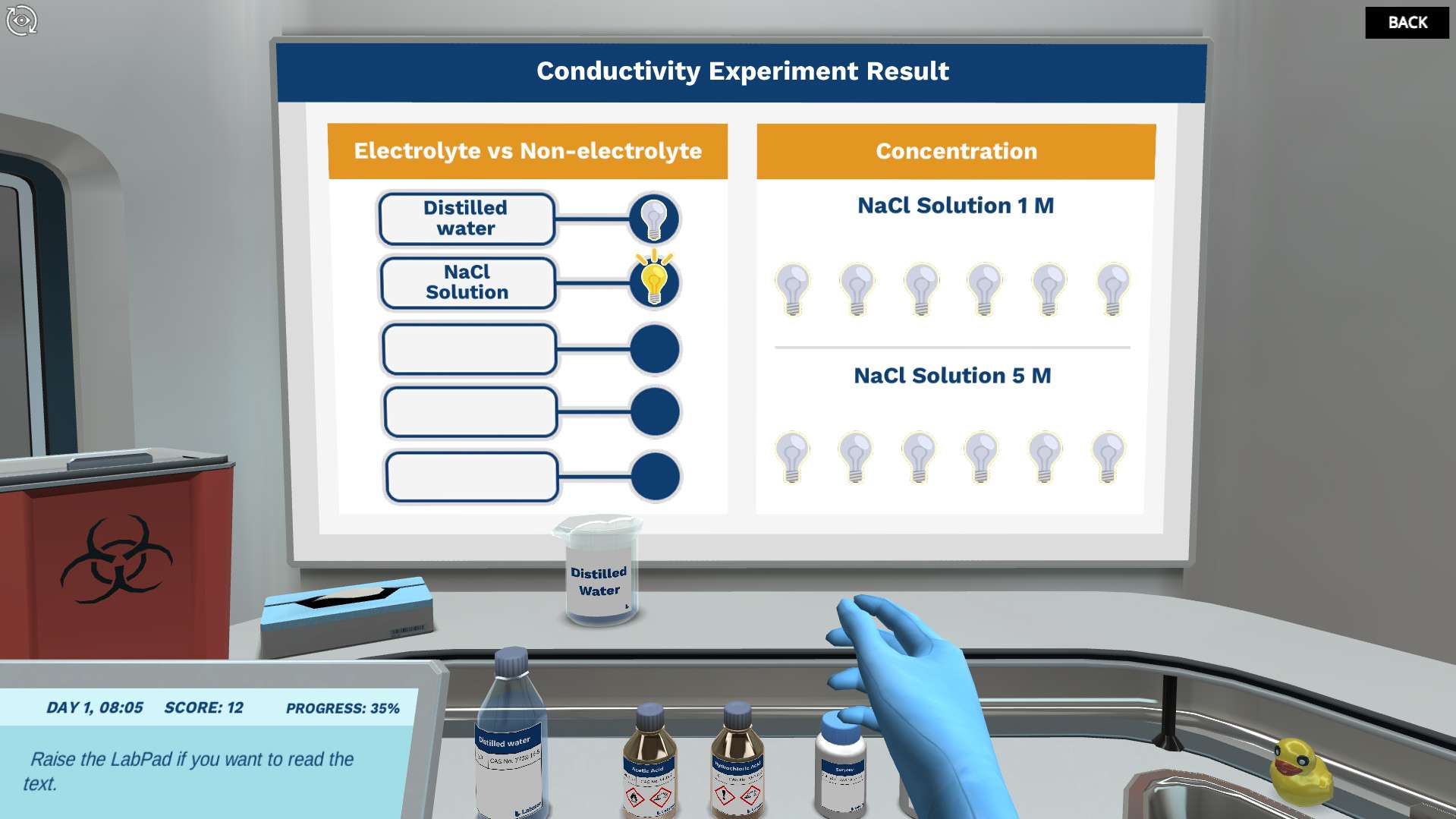Heading 1
Heading 2
Heading 3
Heading 4
Heading 5
Heading 6
Lorem ipsum dolor sit amet, consectetur adipiscing elit, sed do eiusmod tempor incididunt ut labore et dolore magna aliqua. Ut enim ad minim veniam, quis nostrud exercitation ullamco laboris nisi ut aliquip ex ea commodo consequat. Duis aute irure dolor in reprehenderit in voluptate velit esse cillum dolore eu fugiat nulla pariatur.
Block quote
Ordered list
- Item 1
- Item 2
- Item 3
Unordered list
- Item A
- Item B
- Item C
Bold text
Emphasis
Superscript
Subscript
About This Simulation
Embark on this electrifying adventure of conductivity testing. Grasp the difference between electrolytes and nonelectrolytes, the connection between concentration and conductivity, and appreciate the significance of ions in biological systems.
Learning Objectives
- Understand the difference between electrolytes and nonelectrolytes
- Understand the relationship between concentration and conductivity
- Understand the importance of ions in some biological systems
- Understand the practical applications of conductivity testing
About This Simulation
Lab Techniques
- Conductivity testing
Related Standards
- HS-PS1-3
Learn More About This Simulation
Join Dr. One in this Labster simulation where you will unleash the power of chemistry in your classroom! Dive into the world of electrolytes and nonelectrolytes, master the correlation between concentration and conductivity, and discover the pivotal role of ions in biological systems. Learn the essential knowledge and engage in this interactive experiment that brings science to life.
Not just water The mission begins with understanding the concept of electrolytes and how they behave when dissolved in water solutions. You'll start by testing distilled water before learning how to prepare and test various solutions. Including the highly corrosive hydrochloric acid (HCl)!
Conductivity testing By engaging in this hands-on experiment, you will gain practical knowledge of how to perform a conductivity test using various chemical substances, some of which are dangerous! Observe how they behave when dissolved in water and uncover if they allow the solution to conduct electricity. Which substances will light up the conductivity tester?
Ion concentration You will master how to handle dangerous substances and even how to prepare solutions of a higher concentration. This will reinforce your understanding of how electrolytes and nonelectrolytes behave. And to discover the relationship between ion concentration and conductivity.
Biological applications Now that you understand more about electrolytes you'll also learn about the vital role of ions, such as potassium, in biological systems, particularly in the proper functioning of the nervous system. Get ready to have fun while enhancing your knowledge of this important chemistry test.
For Science Programs Providing a Learning Advantage
Boost STEM Pass Rates
Boost Learning with Fun
75% of students show high engagement and improved grades with Labster
Discover Simulations That Match Your Syllabus
Easily bolster your learning objectives with relevant, interactive content
Place Students in the Shoes of Real Scientists
Practice a lab procedure or visualize theory through narrative-driven scenarios


FAQs
Find answers to frequently asked questions.
Heading 1
Heading 2
Heading 3
Heading 4
Heading 5
Heading 6
Lorem ipsum dolor sit amet, consectetur adipiscing elit, sed do eiusmod tempor incididunt ut labore et dolore magna aliqua. Ut enim ad minim veniam, quis nostrud exercitation ullamco laboris nisi ut aliquip ex ea commodo consequat. Duis aute irure dolor in reprehenderit in voluptate velit esse cillum dolore eu fugiat nulla pariatur.
Block quote
Ordered list
- Item 1
- Item 2
- Item 3
Unordered list
- Item A
- Item B
- Item C
Bold text
Emphasis
Superscript
Subscript
A Labster virtual lab is an interactive, multimedia assignment that students access right from their computers. Many Labster virtual labs prepare students for success in college by introducing foundational knowledge using multimedia visualizations that make it easier to understand complex concepts. Other Labster virtual labs prepare learners for careers in STEM labs by giving them realistic practice on lab techniques and procedures.
Labster’s virtual lab simulations are created by scientists and designed to maximize engagement and interactivity. Unlike watching a video or reading a textbook, Labster virtual labs are interactive. To make progress, students must think critically and solve a real-world problem. We believe that learning by doing makes STEM stick.
Yes, Labster is compatible with all major LMS (Learning Management Systems) including Blackboard, Canvas, D2L, Moodle, and many others. Students can access Labster like any other assignment. If your institution does not choose an LMS integration, students will log into Labster’s Course Manager once they have an account created. Your institution will decide which is the best access method.
Labster is available for purchase by instructors, faculty, and administrators at education institutions. Purchasing our starter package, Labster Explorer, can be done using a credit card if you are located in the USA, Canada, or Mexico. If you are outside of North America or are choosing a higher plan, please speak with a Labster sales representative. Compare plans.
Labster supports a wide range of STEM courses at the high school, college, and university level across fields in biology, chemistry, physics, and health sciences. You can identify topics for your courses by searching our Content Catalog.















